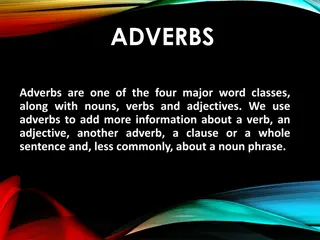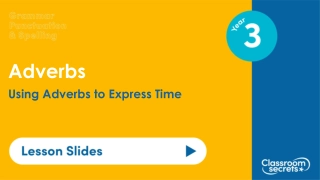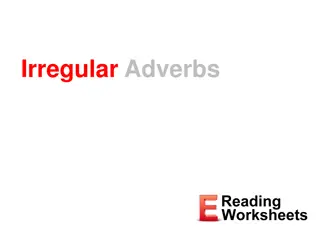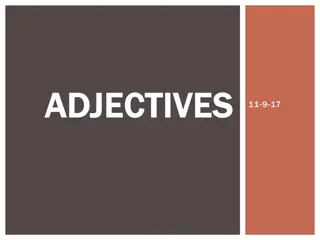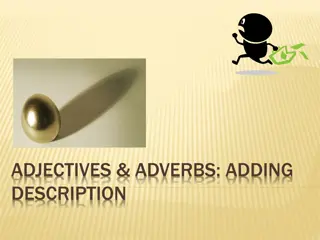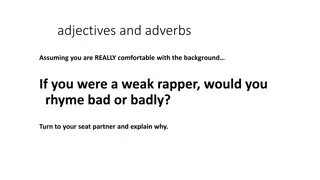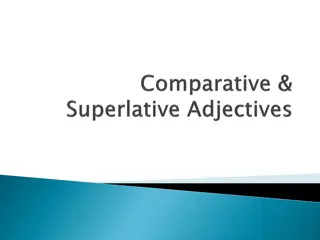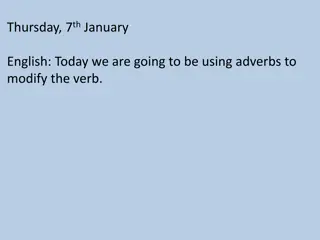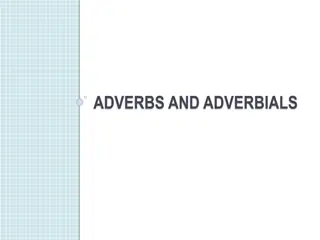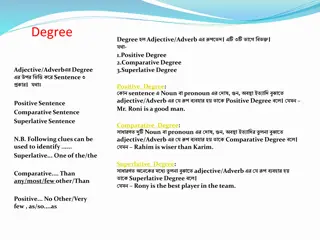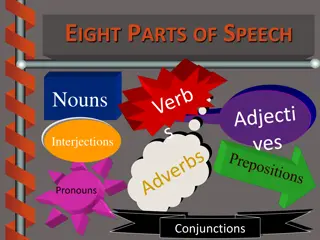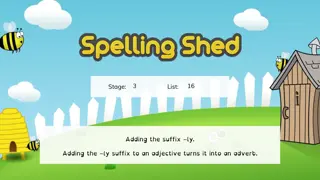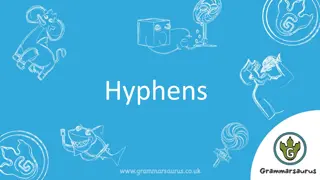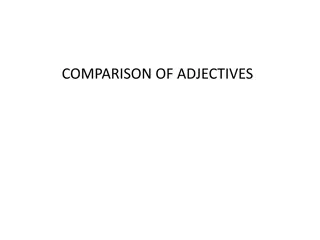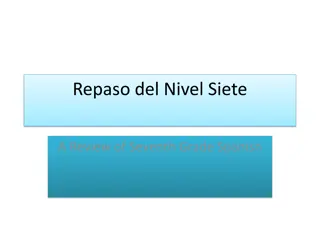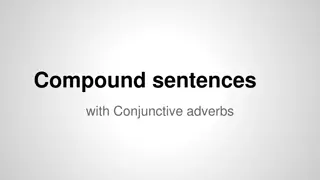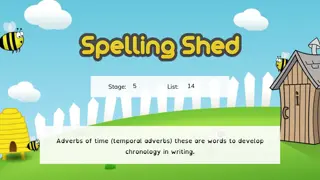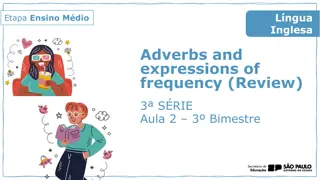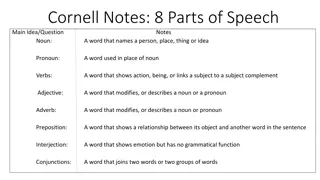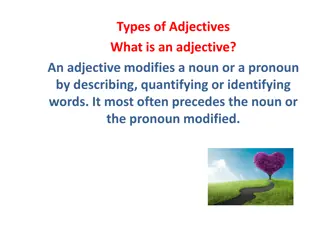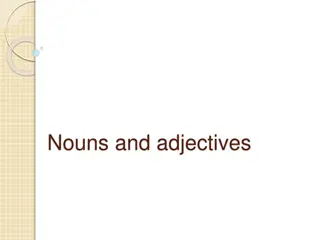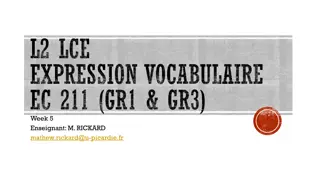Understanding Adjectives and Adverbs: A Comprehensive Guide
Learn about adjectives and adverbs, including their definitions, usage with different types of verbs, and how to distinguish between them with examples. This guide will help you improve your grammar skills and effectively enhance your writing.
Download Presentation

Please find below an Image/Link to download the presentation.
The content on the website is provided AS IS for your information and personal use only. It may not be sold, licensed, or shared on other websites without obtaining consent from the author. Download presentation by click this link. If you encounter any issues during the download, it is possible that the publisher has removed the file from their server.
E N D
Presentation Transcript
Adjectives and Adverbs Adapted from Real Good Grammar, Too by Mamie Webb Hixon
What is an adjective? An adjective is a word that describes or modifies a noun or a pronoun. He seems strange. Strange is an adjective that describes the pronoun he. Quick is an adjective that describes the noun response. The response was quick. Careful is an adjective that describes the implied pronoun you. Be careful on Friday, the 13th.
When should I use an adjective? Use adjectives with these verbs: Be-verbs is are were being am was be been Sense Verbs look feel taste smell sound Linking Verbs become remain appear seem
What is an adverb? An adverb is a word that describes, modifies, or intensifies a verb, an adjective, or another adverb. Most adverbs are formed with the addition of the ly suffix to an existing adjective: He behaves strangely. Strangely is an adverb that describes the verb behaves. Extremely is an adverb that intensifies the adverb quickly. They responded extremely quickly. Particularly is an adverb that describes the adjective careful. Be particularly careful on Friday, the 13th.
When should I use an adverb? Use adverbs with these verbs: Action Verbs swing swat swear blink blast beware Sense Verbs Used as Action Verbs look feel taste smell sound
That seems simple enough. Knowing the difference between adjectives and adverbs seems fairly simple when you know what the word is intended to modify, but be careful; a sense verb might signal either an adjective or an adverb. Greg looked sympathetic. Greg looked sympathetically at the mourners. In the first sentence, sympathetic is describing the noun Greg, so it s an adjective. In the second example, sympathetically is describing the verb looked, so we added ly to sympathetic make it an adverb.
Wait! Sense verbs are on both lists? A side-by-side comparison will help clarify when sense verbs require adjectives and when they require adverbs. Use an Adjective to Modify a Noun: Use an Adverb to Modify a verb: She looked coldly at the heckler. She looked cold. I felt carefully for the switch. I felt sick. I will gladly taste your homemade ice cream. Your homemade ice cream tastes delicious. My dog enthusiastically smells everything he finds in the park. Her perfume smelled floral. That country song sounded depressing. The alarm sounded loudly to warn us to leave the building.
What should I watch for? People often confuse the meanings of real and really. The admiral has real charm (genuine charm). Real is an adjective meaning "genuine." He is really charismatic (very charismatic). Reallyis an adverb meaning very.
What else should I watch for? People often confuse the meanings of sure and surely. I am sure the food will taste good (I am certain). Sure is an adjective meaning certain. The food surely smells good (certainly smells good). Surelyis an adverb meaning certainly.


